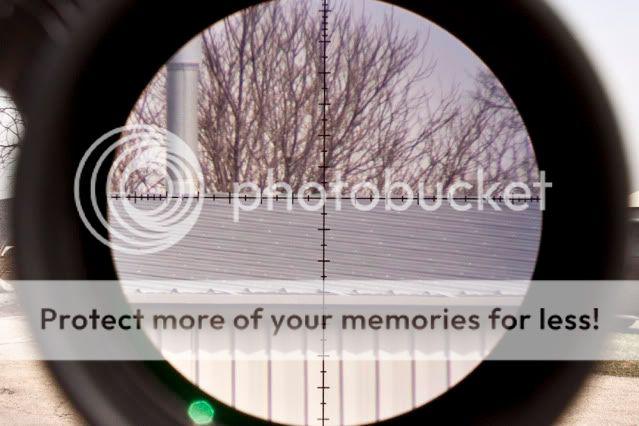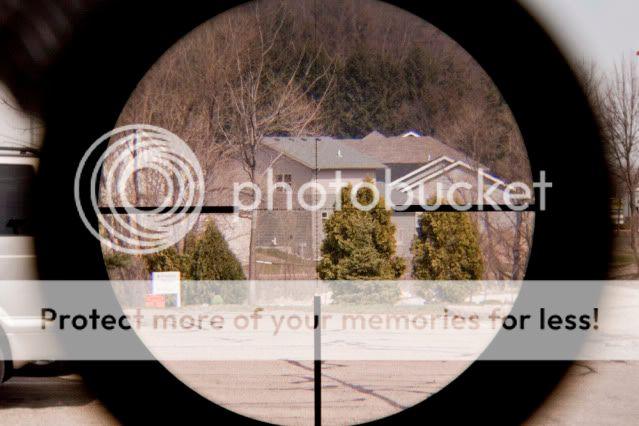So is Vortex the only affordable FFP scope out there?
Anyone know of a place to find USOpitcs used?
Tom
All kinds are traded and sold here on regular basis
Optics & Accessories For Sale - Sniper's Hide Forums
 Help Support Long Range Hunting Forum
Help Support Long Range Hunting Forum
So is Vortex the only affordable FFP scope out there?
Anyone know of a place to find USOpitcs used?
Tom
Mark,
Have you actually ever used a FFP scope? The problems you see with them appear to be largely imagined. My Premier reticle covers 2.16" at 1000 yds. If you opt for the XR reticle it covers 0.9" at 1000 yds. The S&B P4 reticle covers 2.4" at 1000 yds. The P4F covers 1.26". The Vortex PST 4-16 covers 2.16" at 1000 yds. The PST 6-24 covers 1.44" at 1000 yds.
Could you explain how those thicknesses would hinder you in making a shot big game hunting?
As for the rest of the debate, it's really been hashed and rehashed here so many times I prefer to direct people to the search function in lieu of re-typing a book. So just a couple quick questions:
Do you ever use your reticle for anything? Ever? If the answer is no, you always even dial your wind, etc, then FFP really gives you no advantage, you are correct. Stick with SFP.
If you do hold wind or anything else with the reticle, have you never shot in conditions where the mirage was so bad you had to dial down in power? Or low light conditions where it helped you see the target by dialing down in power? If so, how fun was it holding with the reticle then? If not, you're lucky and since you always have perfect conditions when you shoot FFP gives you no advantage.
The size and thickness of the reticle does not change. If the statement is saying that less of the target is being obscured than with a FFP reticle. I assume that's true because I would think the FFP reticle "grows" with increase in power setting, which is not something I like. Correct me if I'm wrong. ..
I am speaking from a bit of ignorance here... but wouldn't the NP-R2 and many other reticles look tiny and very busy on low power?
Yes, but typically they'd make a FFP reticle a bit thicker so it doesn't disappear at low power. I believe they only currently make the MLR in FFP and some weren't happy with the thickness and have said they may be changing it in the future. So I can't answer specifically for NF.Now.... my assumption is that if the, let's say, NP-R2 reticle was in FFP that it would appear 4x's smaller on the 3.5x15 power scope on the low power setting of 3.5x than at the high power setting of 15x, to maintain the constant 2 MOA subtension through out the range. Is that true?
It's easier just to show you. Most of the reticles I like for hunting simply look like a simple duplex at low power, nothing busy about them. For an example well suited to low power and close in brush hunting, the Premier Gen II on 15X and 3X:So can you explain the differences in the "appearance" from one power setting to another....At shorter range, I am hold dead on or maybe a slight holdover, so I do not see a practical benefit between the two (especially consider the cost difference) and if the reticle is made to look "smaller and more busy on low power", that is unappealing to me.


What other scopes out there are first focal plane?
Thanks
Tom
The 3-9 is no good for Long Range work?
At a recent match (not tooting my horn as much as the equipment I used) I was the only person to get a hit on a 10" by 12" steel plate at 1160 yards within 5 minutes and 16 rounds total. I belive I hit around the 11 or 12 th round. There were 4 targets with 4 rounds each in order to get 2 hits per target.
...Anyway, hopefully that gives you a better idea of how they work.
Jon A-----very good post.. A visual always helps those who do not know what they are talking about.
I can second the above that the 3-9 SS is a very good scope for the money. Naturally, most here will want more power but it's a solid all around performer that can get the job done at long range when needed. Bigger news is their upcoming 4.something-20ishX50ish scope. That's one that will be of great interest to many here, it might give the PST's a run for their money.Here are a few affordable ffp scopes I recently found...
Horus Vision are all in FFP $550-$1500
Weaver has some FFP in $600-$800 range
Vortex PST has two FFP model in $800-$900 range
SWFA SS has one at 3-9x42mm $600
Sorry I missed this before. It's not weak at all, and here's why:I did acknowledge that in mirage conditions, you would want to power down. However, it would have to be very light mirage for me to attempt a shot on game @ LR, so that argument is a little on the weak side, IMHO of course.
Unfortunately, I'm still waiting on the PST's like everybody else. I will have full and detailed reports on two of them soon (hopefully). If the 4-16 survives the summer on my 300 RUM (which will be no easy task) and passes all my other tests, I plan to use it this season. The 6-24 will be used as more of a plinker, but on the other hand that means I'll probably put three times as many rounds through it so anything not right with it will bother me quickly.How do you find the PST travel? Is it accurate, precise, relaible, etc? How would you compare it to a NF?